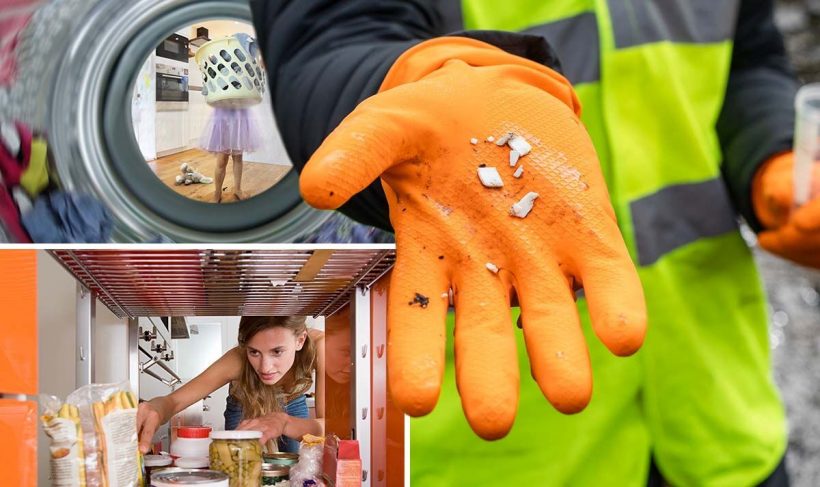Plastics Packaging Tax: Rishi Sunak announces plan in 2020
We use your sign-up to provide content in ways you’ve consented to and to improve our understanding of you. This may include adverts from us and 3rd parties based on our understanding. You can unsubscribe at any time. More info
The research, published in the Journal of Hazardous Materials, suggested that microplastics, whether eaten or inhaled, could be damaging to your cells. The study was conducted in a laboratory setting as epidemiological research is lacking.
Using components of an organism that have been isolated from their usual biological environment, the researchers looked at microplastics and their health effects.
The harm they found included cell death and allergic reactions.
This study is the first one to show this happens at levels relevant to human exposure.
However, the health impact is not quite clear as it is unknown how long microplastics remain in the body before being excreted.
Analysing 17 previous studies, the researchers looked at the toxicological impacts of microplastics on human cell lines.

The team compared how much damage was caused when microplastics were consumed through contaminated drinking water, seafood and table salt.
They found microplastics were capable of causing cell death, allergic responses and damage to cell walls.
This comes as a recent discovery found that microplastics are present in 80 percent of people’s blood – a startling figure.
It’s also estimated that we breathe in over 7,000 microplastic particles daily and the average home has 1,414 pieces per square meter at any time.
From your kitchen to your bathroom, Rich Quelch from Lifestyle Packaging revealed the “main” sources of the extremely small particles in your home.
While microplastics are hard to get away from completely, there are some ways you could reduce your exposure in your home, the expert shared.
The main sources of the tiny particles in your home include: kitchen, wardrobe, and your bathroom cabinet.
Kitchen
Mr Quelch said: “The kitchen is a hotbed for all kinds of soft and hard plastic, and therefore microplastics. From plastic bottles, food wrappers, dishcloths, utensils and sponges it can be hard to avoid them.

“To keep these to a minimum, don’t heat or reheat your food in plastic containers, avoid bottled drinks, switch to wooden and metal utensils, buy loose fruit and vegetables, and use sponges and brushes made from natural materials.”
Wardrobe
A common alternative to expensive fabrics, the likes of polyester, acrylic and nylon hide microplastics in the very fibres of your clothes.
The expert said: “These synthetic fibres are in constant contact with your skin and can even become airborne, entering your body.
“Household appliances like your washing machine and tumble dryer exacerbate this problem by shaking microplastic particles loose from your clothes. In fact, tumble dryers can disperse up to 40 times more microplastic into the air than a washing machine.”
The answer? Check the clothing labels before you make a purchase.

Additionally, Mr Quelch recommended investing in microfibre bags or a filter for your washing machine to catch the particles during the wash.
Bathroom cabinet
The expert said: “There are around 500 recognised microplastic ingredients used in everyday beauty items, from deodorants and lipsticks to baby care products and shampoo.
“Brands use synthetic polymers to form films, bind and bulk out products, deliver other ingredients to the skin, and control viscosity.”
The “most effective” solution is to buy natural, organic personal care that isn’t wrapped in plastic packaging.
“Red flags on ingredients lists include: butylene, polypropylene, carbomer, dimethicone and ethylene,” he added.
Source: Read Full Article
